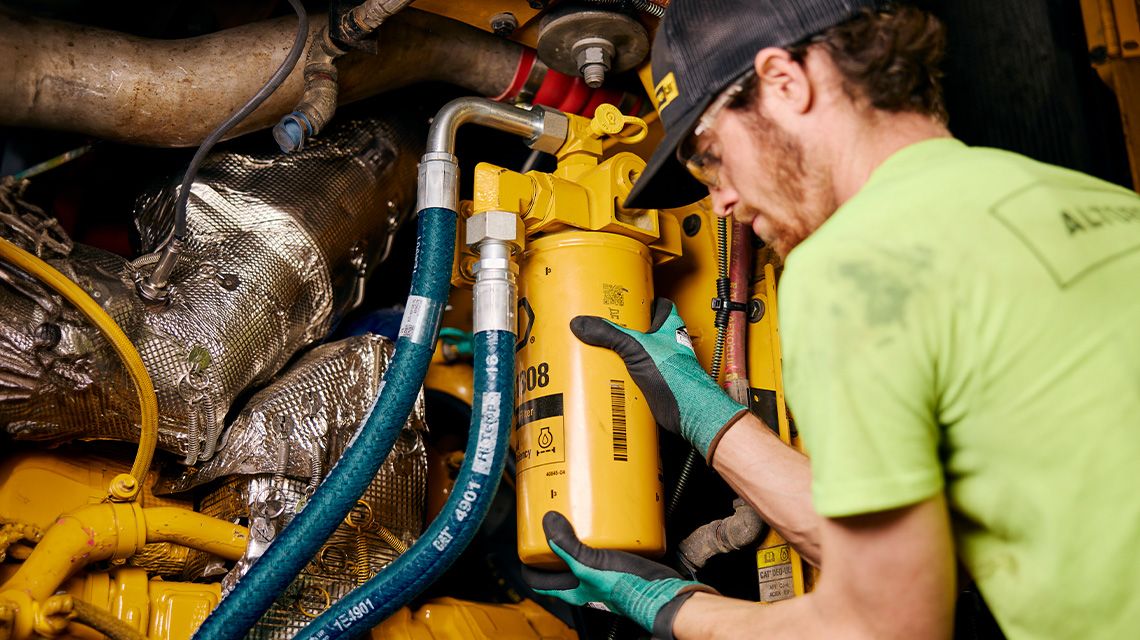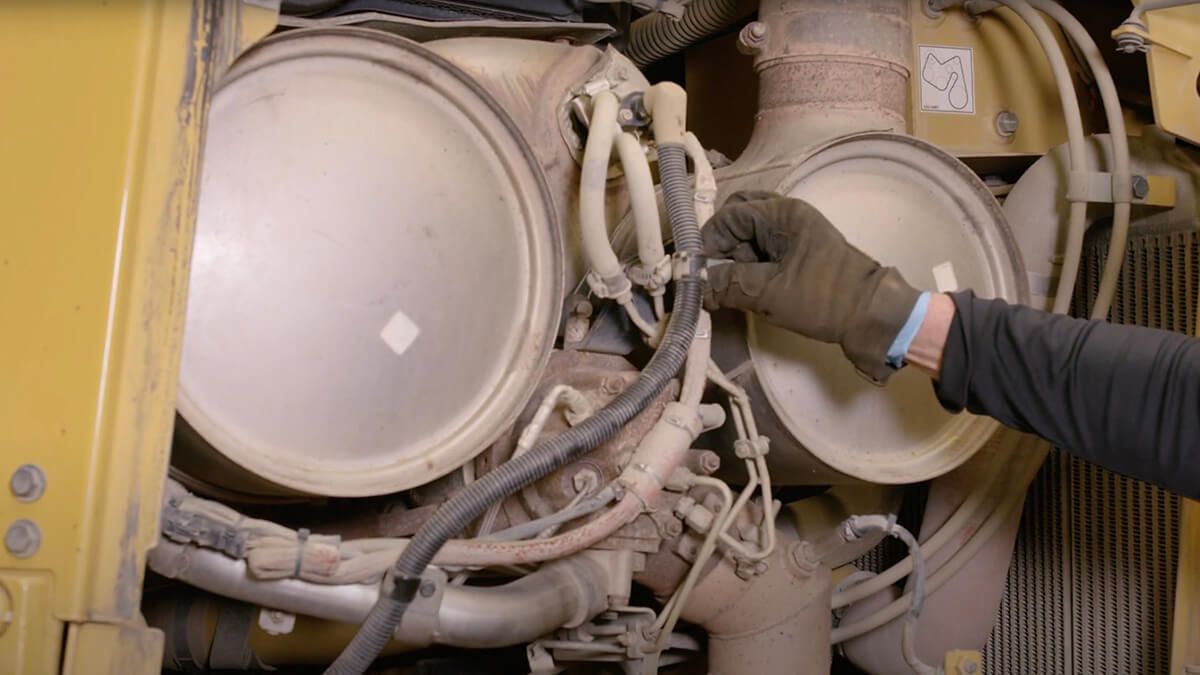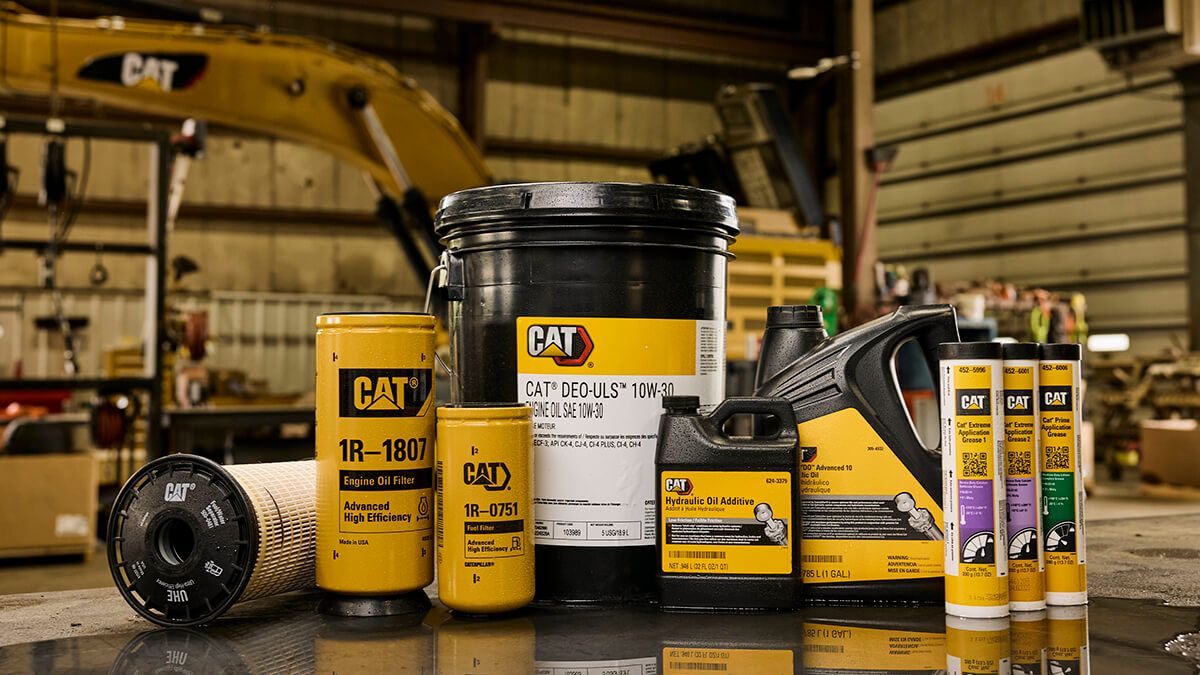If you already have an existing account with another Cat App, you can use the same account to sign in here.
One Account. All of Cat.
Your Caterpillar account is the single account you use to log in to select services and applications we offer. Shop for parts and machines online, manage your fleet, go mobile, and more.
Account Information
Site Settings
Security
Tips for Maintaining Cat® Fluids
Estimated read time: 3 minutes
Equipment downtime is costly, and poorly managing Cat® equipment fluids can be to blame. Neglecting fluid analysis or using the wrong products can lead to expensive repairs. This guide shows how to check and maintain oils and coolant, so your equipment can run harder for longer.
Prepare for Service
Before taking fluid samples, checking levels or adding oils and coolant, move your equipment to flat, dry ground. Wear appropriate personal protective equipment (PPE). Also, check your Operation and Maintenance Manual (OMM) for other safety procedures.
Greasing Tips
How often should you be greasing your equipment? The general rule is to grease every time you refuel. But your Cat dealer can help you figure out the best greasing schedule based on your specific application.
To find the greasing locations, refer to the chart on your equipment, or check your OMM for more details.
Here are a few key greasing tips:
- Wipe off the fitting, or zerk, with a lint-free cloth before greasing.
- If the fitting is packed with old grease, use a tool like a screwdriver to pry it out.
- Pump in the grease until you see some emerge from the joint.
- Minimize contamination by using compatible greases and wiping off old grease from joints.
- Grease in a clean, dust-free area when possible.
- If no grease comes out at the pin joint, make sure the fitting is working correctly.
- For equipment with an autolube system, always keep the tank full and check that the system is functioning properly.
Before Checking Fluids
Take these steps to help prevent contamination:
- Clean around dipsticks or caps with a lint-free cloth before removing them.
- Wipe the inside of caps before putting them back on.
- Use the same product when topping off fluids, or check the OMM for compatibility guidelines — mixing incompatible products can cause serious issues.
- Check your fluids at the hour intervals listed in your OMM.
Don’t forget to check your wiper fluid levels. Also, pay attention to in-cab gauges or notifications that tell you when to add diesel exhaust fluid (DEF), if applicable to your machine.
Key Fluid Checks
Hydraulic fluid: Check the hydraulic oil temperature on your in-cab monitor. Then, using the sight gauge, compare the oil level with the temperature reading. Add more hydraulic oil if necessary.
Coolant: Use the sight gauge to check the level and top it off if needed.
Engine oil: Pull out the dipstick, wipe it clean, dip it back into the tank and then check the oil level. Add oil if it’s not within the full range.
Swing drive oil: If your equipment has a swing drive, check the oil using the dipstick at the base of the boom. Add more oil directly into the dipstick tube if needed.
Transmission fluid: If your equipment has a transmission, check the fluid level with the dipstick and add more if it’s low.
Final drive oil: Move your machine so the oil level mark is horizontal, and make sure the drain plug is facing downward. Remove the oil fill plug to check the level, which should be at the bottom of the opening. Inspect the plug seal and replace it if necessary. Repeat these steps for the other final drive.
Using Cat fluids and filters, plus S•O•SSM Services fluid analysis, can help extend drain intervals. Be sure to check your OMM for more details on the benefits of using Cat products.
For more information and support, contact your Cat dealer. And always check your Operation and Maintenance Manual for specific instruction and safety procedures.



